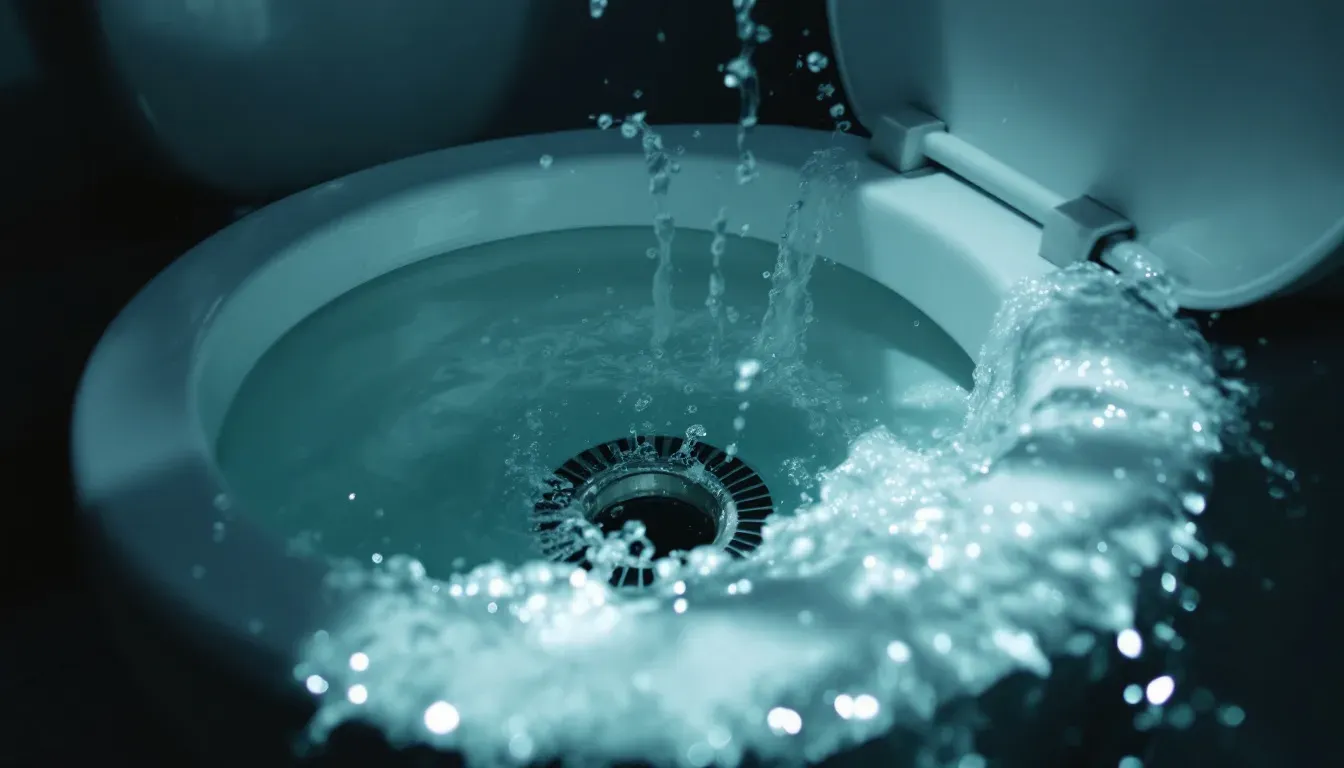
A toilet overflowing is one of those dreaded household disasters that can send anyone into a panic. Whether due to a clog, an issue with the flush mechanism, or an unseen plumbing problem, dealing with an overflowing toilet requires quick action. The good news? You don’t have to be a plumbing expert to handle it. With the right steps, you can stop water flow to the toilet, drain the bowl, and prevent further damage.
This guide will walk you through how to drain an overflowing toilet safely and efficiently. You’ll also learn what causes a toilet to overflow, how to prevent future incidents, and who to call for a clogged toilet if you can’t fix it yourself.
Step 1: Stop the Water Flow to Prevent More Overflow
Before anything else, your priority is stopping the toilet from overflowing further. If water is still rising in the bowl, follow these steps immediately:
Turn Off the Toilet's Water Supply
- Locate the shutoff valve, typically found on the wall behind or next to the toilet.
- Turn it clockwise to stop the water from flowing into the tank.
- If you can’t find or turn the valve, remove the lid from the tank and lift the float cup or ball to halt water flow.
Use the Flapper Trick
- Inside the tank, find the flapper at the bottom.
- Push it down firmly to seal the flush valve and prevent more water from entering the bowl.
These steps ensure no additional water enters the toilet while you work on toilet overflow repair.
Step 2: Drain the Overflowing Toilet Bowl
Once you’ve stopped the water flow, drain the toilet bowl to prevent further mess. Here’s how:
Option 1: Use a Cup or Bucket
- Wear rubber gloves to protect your hands.
- Use a small cup or bucket to scoop out excess water and pour it into a nearby sink or bathtub.
Option 2: Use a Wet/Dry Vacuum
- A shop vac (wet/dry vacuum) is the fastest and cleanest way to remove water from the bowl.
- Simply suction the water out until the bowl is nearly empty.
Once the water is drained, you can focus on fixing the root cause of the overflow.
Step 3: Unclog the Toilet to Prevent Future Overflow
A clog is the most common reason for a toilet overflowing when flushed. Here’s how to clear it:
Plunge the Toilet
- Use a flange plunger (designed for toilets, not sinks).
- Position the plunger over the drain hole and push down gently to form a seal.
- Pump the plunger forcefully 10–15 times, then pull it up quickly.
- Repeat until the water drains freely.
Try a Toilet Auger (Plumbing Snake)
- Insert the auger into the drain hole and crank it to break up the clog.
- Once you feel resistance, twist and pull it back up.
- Flush to check if the clog is gone.
If plunging and snaking doesn’t work, the blockage may be deeper in the pipes, requiring professional help.
Step 4: Clean and Sanitize the Area
Once the water is under control, it’s essential to disinfect the area:
- Use hot water and disinfectant cleaner to sanitize the floor and toilet exterior.
- If water spilled onto the floor, dry it completely to prevent mold growth.
- Dispose of used gloves and any towels used for cleanup.
When to Call a Professional for Toilet Overflow Repair
If the overflow keeps happening, it could signal a bigger issue, such as:
- A deep sewer line clogs that household tools can’t reach.
- A malfunctioning fill valve or flapper in the toilet tank.
- A problem with your septic system (for homes with septic tanks).
If your DIY attempts don’t solve the issue, don’t hesitate to call a professional for toilet overflow repair.
How to Prevent Toilet Overflows in the Future
Prevention is key when it comes to plumbing problems. Here are some simple tips to avoid another toilet overflowing incident:
1. Watch What You Flush
- Never flush wipes, paper towels, cotton balls, feminine products, or excess toilet paper.
- Stick to flushing human waste and toilet paper only.
2. Perform Regular Maintenance
- Check the toilet tank components (flapper, float, and fill valve) every few months.
- Fix any leaks or malfunctions before they lead to bigger problems.
3. Keep a Plunger and Auger Handy
- Having a toilet plunger nearby can save you from an emergency.
- A toilet auger helps clear deep clogs that a plunger can’t fix.
- If you notice slow drains or frequent clogs, schedule a professional cleaning at least once a year.
- This helps prevent buildup that could cause another toilet overflowing when flushed scenario.
Call Us for Professional Toilet Overflow Repair
If your toilet keeps overflowing despite your best efforts, it’s time to bring in the experts. At Dinomite Services, we provide fast, reliable, and affordable plumbing solutions. Whether it’s a clogged toilet, sewer line issue, or faulty toilet component, we’ve got the tools and expertise to fix it.
Don’t let an overflowing toilet ruin your day—contact us today for quick and efficient service!
